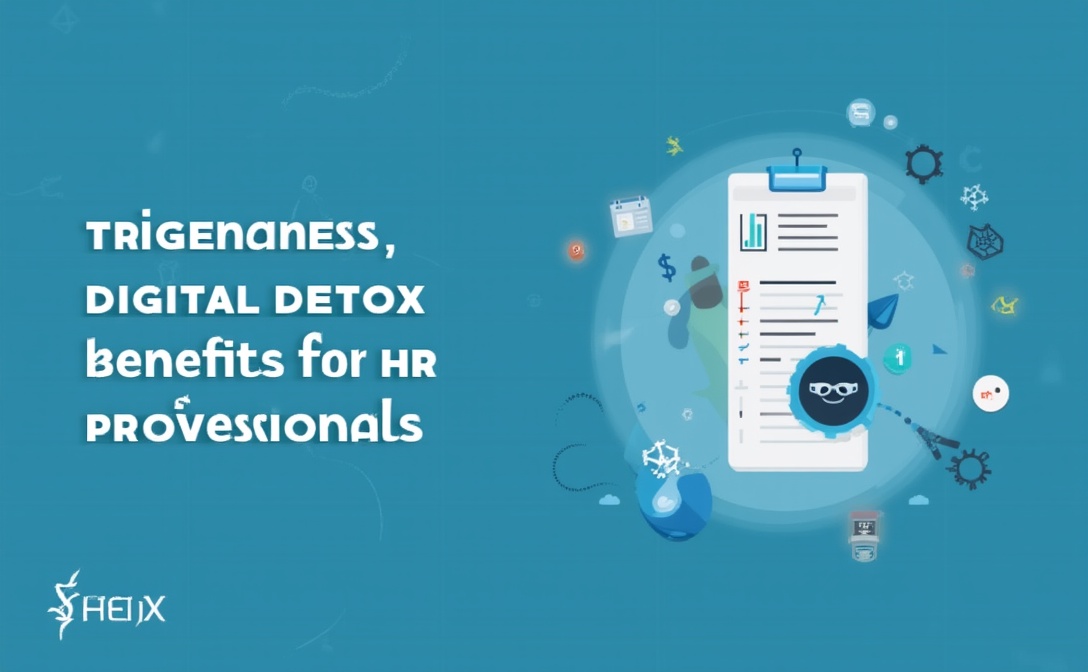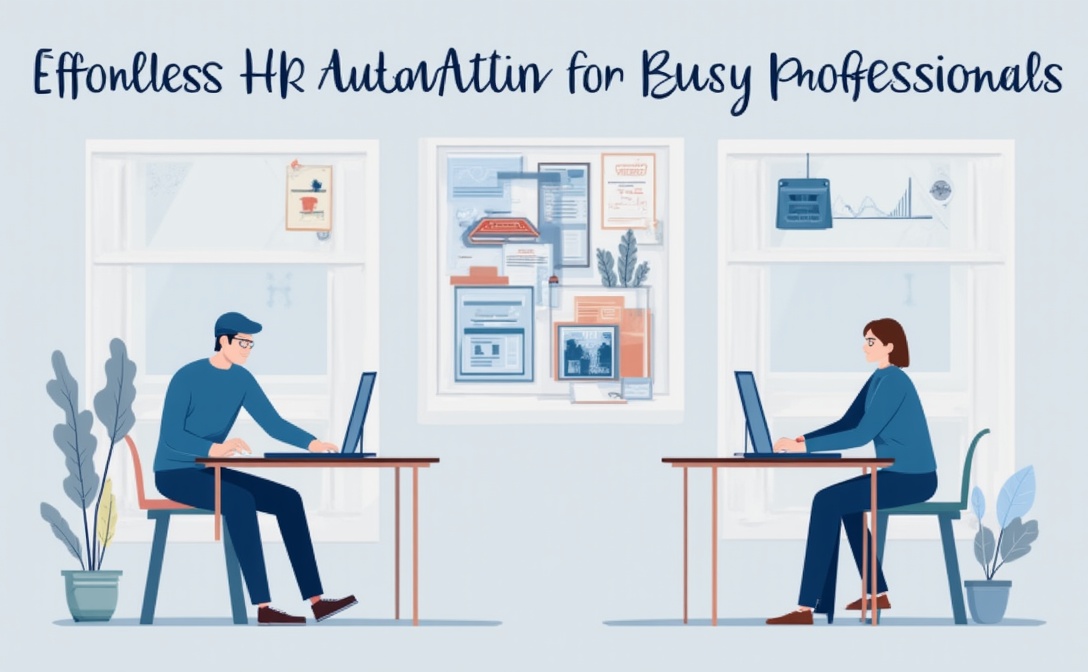The Surprising Benefits of a Digital Detox and How to Achieve One for Better Mental Well-Being
Estimated reading time: 8 minutes
Key Takeaways
- Enhanced focus and mental clarity are achievable through regular digital breaks, improving decision-making and productivity.
- Digital detoxes help reduce stress and anxiety, fostering healthier emotional states within teams.
- Limiting screen time before sleep can significantly improve sleep quality and overall well-being.
- Disconnecting sparks creativity and problem-solving skills—valuable assets in recruitment and HR roles.
- Prioritizing face-to-face interactions and personal reflection strengthens relationships and self-awareness.
Table of Contents
- The Surprising Benefits of a Digital Detox
- Understanding the Digital Detox
- The Surprising Benefits of a Digital Detox
- How to Achieve an Effective Digital Detox
- The Role of AI and Workflow Automation in Supporting Digital Well-Being
- Practical Takeaways for Recruiters and HR Professionals
- Conclusion: Embracing Digital Detox for a Healthier Future
- FAQ
Understanding the Digital Detox
A digital detox involves consciously disconnecting from digital devices such as smartphones, social media platforms, emails, and other electronic communications for a designated period. The goal is to reduce overstimulation, restore focus, and enhance mental well-being. Interestingly, while many associate digital detoxes with leisure and personal health initiatives, their implications extend far into the workplace, affecting productivity, employee satisfaction, and overall company culture.
According to recent research, chronic digital overexposure can lead to increased stress, anxiety, and burnout. Conversely, intentionally stepping away from screens has been linked to numerous mental health benefits, which might seem surprising given our reliance on technology.
The Surprising Benefits of a Digital Detox
1. Enhanced Mental Clarity and Focus
One of the most immediate benefits observed during a digital detox is improved concentration. Constant notifications, emails, and social media updates create a fragmented attention span, reducing productivity. When these distractions are eliminated, individuals often report feeling more focused and able to complete tasks with greater efficiency.
For recruiters and HR professionals, this can translate into sharper decision-making and a more strategic approach to talent acquisition and employee engagement.
2. Reduced Stress and Anxiety
Continuous digital engagement can lead to information overload and a sense of never being truly ‘off.’ This overload often results in heightened stress levels and anxiety. Digital detoxes help in calming the mind, allowing individuals to reset their emotional baseline.
Studies show that reducing screen time can significantly lower cortisol levels—the hormone associated with stress. For organizations, fostering a culture that encourages digital breaks can contribute to healthier, less stressed teams.
3. Improved Sleep Quality
Exposure to blue light emitted from screens disrupts natural sleep cycles, causing difficulties in falling asleep and reducing sleep quality. A digital detox before bedtime can improve sleep patterns, leading to better rest and higher daytime alertness.
Adequate sleep is crucial for cognitive function and emotional resilience, making this benefit especially pertinent for HR leaders aiming to support employee well-being.
4. Greater Creativity and Problem-Solving Skills
Disconnecting from digital devices provides mental space for reflection, inspiration, and creative thinking. Without the constant influx of information, the brain can process problems more deeply and generate innovative solutions.
For recruiting professionals, this may translate into more effective talent sourcing strategies and more compelling employer branding.
5. Strengthened Personal Relationships
Digital detoxes foster more meaningful face-to-face interactions, strengthening personal and professional relationships. Enhanced communication and empathy can improve teamwork, leadership, and client relationships.
In a recruitment context, this can boost candidate experience and client satisfaction.
6. Reconnection with Self and Priorities
Stepping away from screens allows individuals to reconnect with their core values and personal goals. This introspection can lead to increased motivation, satisfaction, and mental resilience—qualities vital for navigating the dynamic landscape of talent acquisition and HR management.
How to Achieve an Effective Digital Detox
Implementing a digital detox doesn’t have to be an all-or-nothing approach. Here are practical strategies tailored for professionals and organizations aiming to harness these benefits:
1. Set Clear Boundaries and Goals
Begin by defining specific times for disconnecting, such as during meals, the first hour after waking, or before bedtime. Use calendar alerts or app restrictors to enforce these boundaries. For example, dedicating “digital-free hours” can bring immediate mental relief.
2. Designate Tech-Free Zones
Create physical spaces within the workplace or at home where digital devices are not permitted. This encourages face-to-face interactions and mindfulness. For HR teams, establishing quiet zones or no-phone meetings can foster deeper engagement.
3. Use Technology to Limit Technology
Leverage workflow automation tools, such as n8n, to automate routine tasks—like candidate outreach, interview scheduling, or onboarding—to reduce the need for constant digital engagement. Automation not only streamlines processes but also minimizes digital fatigue, freeing time for more meaningful work.
4. Schedule Digital Detox Days
Designate specific days or weekends as digital detox days. Encourage employees to unplug and engage in offline activities such as outdoor recreation, reading, or hobbies. Companies can promote these initiatives as part of mental health programs.
5. Practice Mindfulness and Digital Self-Care
Incorporate mindfulness practices like meditation or deep-breathing exercises into daily routines. Encourage employees to be conscious of their digital habits—for example, avoiding checking phones during meetings or after hours.
6. Communicate and Lead by Example
HR leaders and managers play a crucial role in setting digital boundaries. Modeling healthy digital habits reinforces the importance of well-being and creates a supportive organizational culture.
7. Leverage Automation and AI Consulting
By implementing AI-driven workflow automation solutions, such as those provided by your company, HR and recruitment teams can reduce manual tasks that often contribute to digital overload. Automation can handle tasks like candidate screening, onboarding, and engagement, lessening digital fatigue and freeing up mental space.
The Role of AI and Workflow Automation in Supporting Digital Well-Being
Our expertise in AI consulting and n8n workflows positions us to help organizations develop systems that not only improve operational efficiency but also promote healthier digital habits. Automating routine tasks reduces the relentless digital churn associated with recruitment and HR processes.
With intelligent automation, HR teams can focus on strategic activities requiring human empathy and insight, such as talent engagement, onboarding, and employee development. Automation tools can also send reminders for digital detox practices, encouraging employees to take breaks.
Practical Takeaways for Recruiters and HR Professionals
- Implement workflow automation to handle repetitive tasks and reduce digital clutter.
- Encourage a culture of digital mindfulness by setting boundaries and promoting offline times.
- Organize offline engagement activities that reinforce mental well-being.
- Lead by example in practicing and supporting digital detox initiatives.
- Educate teams about the benefits of a digital detox and strategies for effective implementation.
Conclusion: Embracing Digital Detox for a Healthier Future
In an era where digital dependence is pervasive, recognizing the importance of a digital detox is pivotal for maintaining mental health and workplace productivity. The benefits—ranging from improved focus and creativity to reduced stress and better sleep—highlight that sometimes, unplugging is the most powerful way to recharge.
As specialists in AI consulting and workflow automation, we understand that smart technology can facilitate healthier digital habits, not hinder them. By leveraging automation tools such as n8n, organizations can streamline their processes, reduce digital fatigue, and foster a culture that values mental well-being.
If you’re interested in transforming your HR workflows or exploring how automation can support a healthier, more productive workforce, contact us today. Let’s work together to craft innovative solutions that prioritize both operational excellence and employee well-being.
Take the first step towards a more balanced digital life—reach out now to learn how our AI-powered consulting services can help you achieve this vision.
FAQ
- What is a digital detox?
- A digital detox involves intentionally disconnecting from digital devices like smartphones, social media, and email for a period to reduce overstimulation and improve mental health.
- How long should a digital detox last?
- The duration varies based on individual or organizational needs, from a few hours daily to entire weekends or longer retreats.
- Can automation reduce digital overload?
- Yes, workflow automation tools can streamline routine tasks, minimize repetitive digital engagement, and free up mental space for strategic activities.
- How can companies promote digital well-being?
- Organizations can create tech-free zones, schedule offline activities, and model healthy digital habits to foster a culture of well-being and mindfulness.






